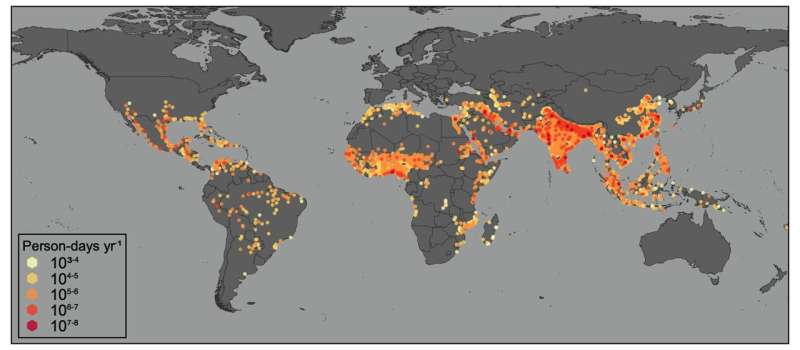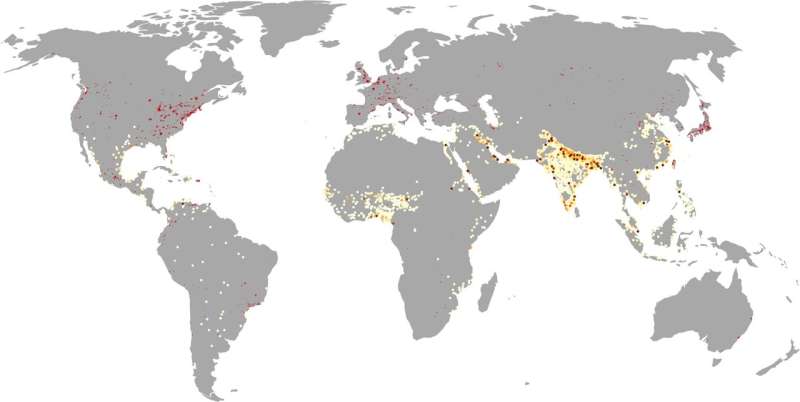Tyson Fedor
CTV News Calgary Video Journalist
Follow | Contact
Updated Oct. 4, 2021
CALGARY -
A Think HQ poll released Monday suggests Premier Jason Kenney is continuing to see a decline in approval of his leadership in Alberta.
More than 1,100 respondents gave their opinion on the Kenney's leadership, with only 22 percent of offering any degree of approval for the first-term premier.
Of the respondents, 77 per cent disapprove of Kenney’s leadership, while 61 per cent of those strongly disapprove.
Think HQ’s results indicate a sharp decline in support, which is down 16 percentage points from July, when Kenney received an uptick in support following the removal of all public health restrictions.
“Jason Kenney for one thing, because of his personality, is unlikely to willingly hang up his hat,” said John Church, a political scientist at the University of Alberta. “Jason Kenney is a different animal than any other political leaders we’ve had in the province.”
Kenney’s highest approval rating, accordin to Think HQ, sat around 56 per cent following his election victory in 2019.
“Jason Kenney is a leader on life-support, and his prognosis is not good,” said Think HQ president Marc Henry.
“We have not seen a sitting premier with numbers this low in almost a decade.”
The last Alberta premier to sink to these depths in terms of public support was Alison Redford.
She recorded an approval rating of only 18 per cent in March 2014, shortly before resigning.
CTV News contacted Redford for a response to this poll.
“I am not commenting on this matter,” stated Redford.
Henry says even in stronghold regions like rural Alberta, Kenney’s approval rating does not eclipse 30 per cent.
Henry adds men are now equally unsupportive of Kenney as women.
“Ralph Klein, he resigned when his numbers dropped below 50 per cent,” said Church.
“(Kenney's) core political base in Alberta is very unhappy with him and they are the ones that have been pushing the hardest for his removal as leader of the party at this point."
Among respondents who voted UCP in the last provincial election, only 39 per cent say they approve of Kenney’s performance since.
The UCP has had to deal in recent weeks with party infighting from caucus members and from constituency associations, some of which had called for an early leadership review.
UCP officials have confirmed a leadership review, scheduled for next fall, was moved to spring 2022.
It will take place at the party’s annual general meeting in Edmonton on April 8 and 9, 2022.
The latest Think HQ poll was conducted between Sept. 29 and Oct. 1 and has a margin of error of +/- 2.9 per cent.
The 'political gamble' in July 'is now taking a punishing toll both politically for the leader and in real human costs for Albertans and the health-care system'
Author of the article: Don Braid • Calgary Herald
Publishing date: Oct 04, 2021 •

Premier Jason Kenney’s approval rating is now very close to the level marked BASEMENT EXIT.
Only 22 per cent of Albertans support him, while 77 per cent disapprove of his performance, according to a new poll from Marc Henry’s ThinkHQ.
The brutal result could see UCP riding boards ramp up efforts to force him out before the leadership review now set for next April.
Even the meagre approval appears soft. Of the 22 per cent who support Kenney, only six per cent are ardent backers while 16 per cent say they “somewhat” approve.
Of the 77 per cent who disapprove, 61 per cent do so strongly.
NDP Leader Rachel Notley, meanwhile, gets 50 per cent approval and 47 per cent disapproval.
Kenney’s approval is lowest in Edmonton (no surprise there), but it’s identically awful in Calgary, at 19 per cent in both cities.
With numbers like that, the NDP could win the province with little help from rural Alberta.
But Notley might get more than expected. Kenney’s approval outside the big cities is nowhere higher than 30 per cent.
The premier enjoyed a popularity jump in July when COVID-19 rates were low and many people wanted to believe his promise of Alberta’s “best summer ever.”
But when cases surged in September and the government lay dormant, Kenney quickly crashed 16 percentage points to his current dismal standing.
ThinkHQ president Henry recalls what happened to Progressive Conservative Premier Alison Redford on March 19, 2014.
She stood at 18 per cent popularity — and had seen the poll that day — when she announced her resignation in the legislature rotunda.
Ralph Klein stood at 17 per cent in the spring of 1992, largely because of a fierce scandal over MLA pensions. Some ex-MLAs were getting more retirement pay than their salaries.
Klein abolished the pension plan and went on to win a majority, with three more to come later.
Recoveries do happen and Kenney has until the spring of 2023 to regain approval — if his party gives him the chance.
Henry doesn’t like the premier’s odds for a comeback.
“Jason Kenney is a leader on life-support, and his prognosis is not good,” he said in comments on the polling.
Redford’s 18 per cent, he says, was only “a ‘margin of error’ difference from Kenney’s results today.”
The “political gamble” in July “is now taking a punishing toll both politically for the leader and in real human costs for Albertans and the health-care system.”

Henry notes that the UCP was sewn together from two often antagonistic conservative parties that wanted to beat the NDP, but now “the creature is tearing itself apart at the stitches.”
At the party level, the opposition didn’t die just because Kenney faced down a caucus revolt on Sept. 22.
As of last Friday, 10 riding associations had agreed to a motion calling for a leadership vote before March 1.
Twenty-two must sign on to force the timeline on the party executive, which is famously, although perhaps not permanently, loyal to Kenney.
The motion also calls for the appointment of two riding presidents to the leadership election committee, and for an outside accounting and auditing firm to count votes and control electronic voting.
That’s a sharp echo of the scandals from the leadership campaign that elected Kenney.
The party executive, while appearing to compromise with the April review, actually ignored all three demands in the motion.
Then there’s money — the grease of every election machine.
The NDP has vastly outstripped the UCP in fundraising all this year.
In the first quarter, for instance, Kenney’s party raised $591,000, the NDP $1.1 million. The trend continued in the second quarter.
The third quarter ended Sept. 30. Although results aren’t yet official or announced, the NDP says it collected $1.3 million.
If the UCP falls far short again, as seems very likely, this premier will stand on one shaky basement pedestal.
Don Braid’s column appears regularly in the Calgary Herald.
UCP confirms leadership review of Alta. premier in spring 2022
Trudeau slams premiers of Alta. and Sask. for handling of 4th wave
'These numbers are shocking': Alberta NDP doubles UCP in 2021 Q2 fundraising
Almost eight in 10 support proof-of-vaccine requirement to visit public places: poll
Kenney's cabinet shuffle: Senior ministers remain in place as new positions added
Alberta's new rules, including masking, now in effect province-wide


